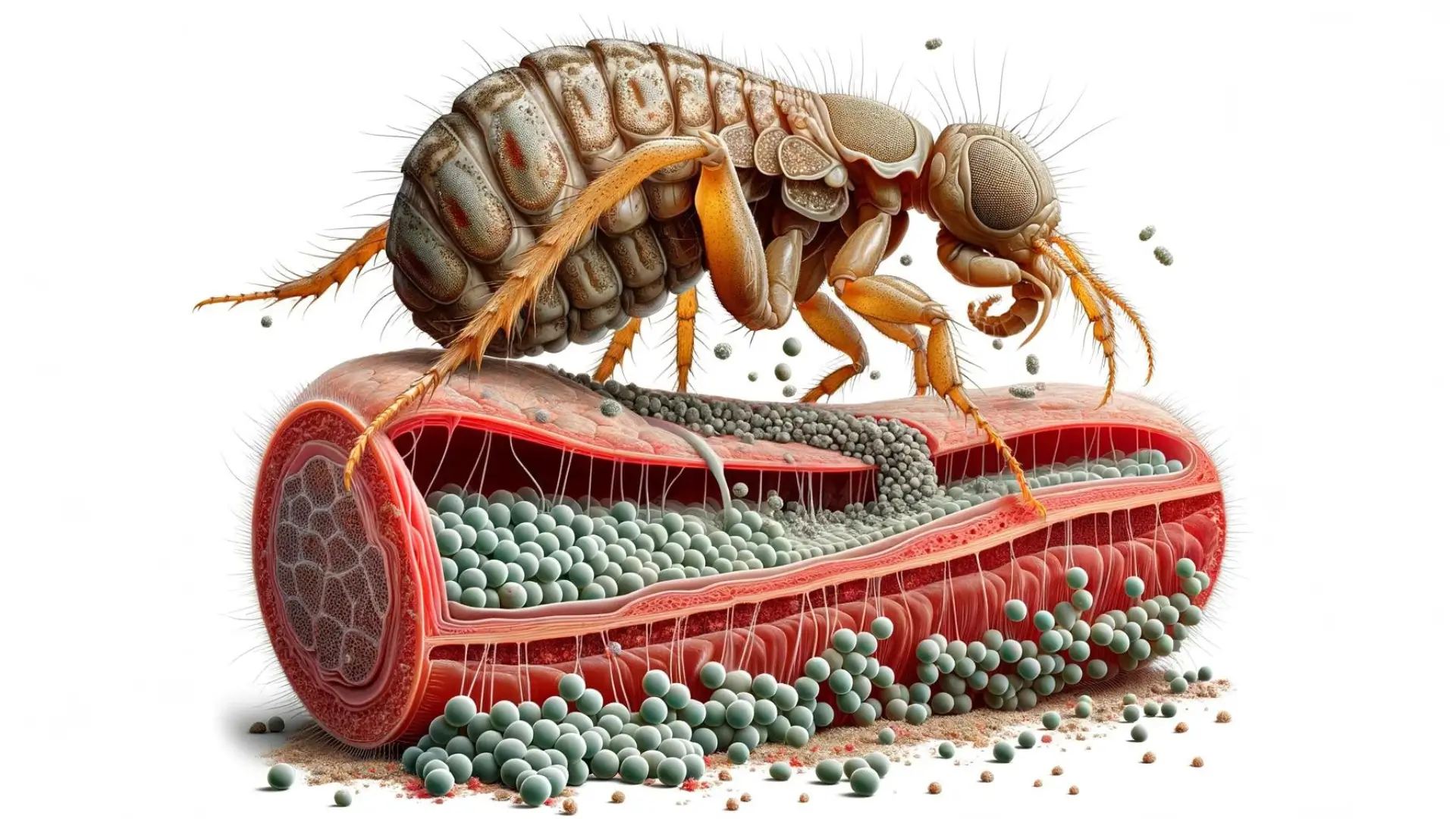Fleas
Fleas are notorious as tiny, jumping pests that primarily target mammals and birds, thriving in their fur and feathers.
Remarkably, a single female flea can lay up to 50 eggs a day, making their population difficult to control.
Despite their preference for animal hosts, fleas do not hesitate to bite humans, leading to discomfort and potential health risks.
Flea Life Cycle
Understanding the flea life cycle is crucial in combating their presence. This cycle encompasses four stages: egg, larvae, pupae, and adult. The duration of this cycle can vary significantly, influenced by environmental conditions.
Fleas depend on blood meals to progress through their life stages, highlighting their resilience and the necessity for effective management strategies.
Female fleas possess an extraordinary egg-laying capacity, a subject of extensive research due to its implications for both pet health and human discomfort.
Once a female flea has had a meal of blood, she can lay a staggering number of eggs, typically ranging from 20 to 50 a day, and can produce as many as several thousand over the course of her lifetime, which spans a few months under optimal conditions.
This prolific reproduction rate highlights the importance of prompt and effective flea control measures. By laying eggs on their host, which can then fall off into carpets, bedding, and furniture, fleas ensure the continuation of their lifecycle, leading to infestations that can be challenging to eradicate.
The study of female fleas’ egg-laying capabilities not only provides insight into their survival strategies but also underscores the need for comprehensive approaches to manage their populations and mitigate their impact on pets and humans alike.
Fleas in Homes Without Pets
Fleas can be a perplexing problem in homes without pets, a phenomenon that might seem counterintuitive at first glance.
However, understanding the life cycle and behavior of fleas can shed light on how these infestations occur and persist. Fleas are opportunistic parasites that primarily feed on mammals and birds.
While pets are their preferred hosts, fleas can enter homes through various other means.
First, wild animals such as rodents, squirrels, or raccoons nesting in or around a home can introduce fleas into the environment. These pests can carry fleas into your yard, and the fleas can then find their way inside through small cracks and openings.
Once indoors, fleas can survive by feeding on human blood, although humans are not their preferred host.

Second, humans can unknowingly transport fleas into their homes. Fleas can hitch a ride on clothing or belongings after spending time in an infested area, such as a park or a friend’s house where pets may have fleas.
Once inside, the lack of a preferred host doesn’t stop the flea lifecycle; the larvae can feed on organic debris found in carpets, cracks, and bedding until they mature.
Fleas thrive in warm, humid environments, and their eggs can remain dormant for months before hatching under favorable conditions.
This means that even homes without pets can face sudden flea outbreaks, especially if the conditions within the home become conducive to their development.
And when talking about fleas, there is almost always never just one.
To manage fleas in homes without pets, it’s important to focus on prevention and control measures. Regular cleaning, including vacuuming floors and furniture and washing bedding at high temperatures, can help remove eggs, larvae, and adults.
Sealing cracks and crevices can prevent wild animals from bringing fleas into the home. In cases of severe infestation, professional pest control services may be necessary to apply treatments that target all stages of the flea life cycle, ensuring the elimination of these pests.
What’s the Problem With Fleas?
Fleas, despite their small size, present significant health hazards to both humans and pets, necessitating a thorough understanding and diligent efforts to lessen their effects.
These parasitic insects are more than just an annoyance; they serve as carriers for a variety of diseases and can induce allergic reactions.
The saliva that fleas inject into the skin while feeding can lead to an allergic condition known as flea allergy dermatitis (FAD) in pets, characterized by severe itching, loss of fur, and secondary skin infections. In humans, flea bites often result in small, itchy welts that may become further irritated and prone to infection due to scratching.
In addition to the immediate discomfort caused by their bites, fleas are capable of transmitting several severe illnesses.
They are historically notorious for spreading the bubonic plague, serving as vectors for the Yersinia pestis bacteria from rodents to humans.
Although occurrences of the plague are rarer today, the risk persists in certain areas, highlighting the importance of effective flea control in preventing disease transmission.
Fleas can also transmit Bartonella henselae, the bacteria responsible for cat scratch fever, to humans, either through contaminated flea feces entering cuts or scratches on the skin or via a cat scratch.
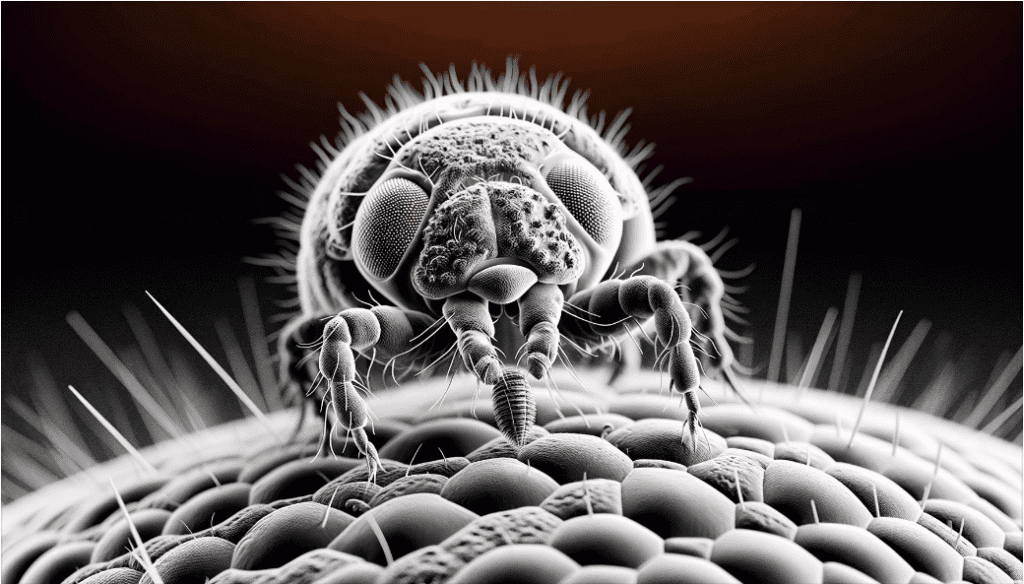
Another disease, murine typhus, caused by Rickettsia typhi bacteria, can be transmitted by fleas through infected flea feces that come into contact with cuts or abrasions on human skin.
Additionally, fleas can facilitate the transmission of tapeworms to pets and humans.
This occurs when a flea carrying tapeworm larvae is ingested, often during grooming or inadvertently, allowing the larvae to develop into adult tapeworms within the intestines, potentially leading to nutritional deficiencies and weight loss.
In light of these health risks, it is imperative to implement comprehensive flea control measures to safeguard the health of humans and pets alike.
Such measures include regular pest control practices, maintaining cleanliness within the home, and ensuring that pets receive preventive flea treatments.
Awareness and proactive prevention can substantially diminish the likelihood of flea-borne diseases, contributing to a safer and healthier living environment for all.
For an easy cost effective preventative solution to fleas you can pick up diatomaceous earth. It uses tiny particles that cut through fleas and dry them out, effectively killing them. It can be found for 10-20$ at Walmart and other stores.
So How Do Fleas Survive In A House With No Pets?

In homes without pets, fleas demonstrate remarkable adaptability, managing to survive by feeding on human blood.
These tiny parasites are skilled at finding refuge within the nooks and crannies of a household, thriving even in spaces lacking their preferred animal hosts. Fleas’ ability to adapt to such environments showcases their resilience and poses a significant challenge for homeowners aiming to eradicate them.
Fleas possess a lifecycle that allows them to remain dormant for extended periods until conditions are favorable for their development. In the absence of pets, human hosts provide an alternative source of nourishment, ensuring the continuation of the flea population.
They conceal themselves in carpets, bedding, and upholstery, emerging to feed when they detect warmth and carbon dioxide, signals that a host is near.
This survival mechanism of fleas underscores the importance of thorough and consistent pest control measures in homes, regardless of the presence of pets.
Understanding how fleas manage to sustain themselves without pets illuminates the necessity for vigilance in maintaining a flea-free home, emphasizing the resilience of these parasites and the need for strategic approaches to control their populations.
Signs of Flea Infestation in Pet-Free Homes
Even if your home doesn’t have pets, it’s important to be vigilant for signs of a flea infestation. Here are some indicators to watch for:
Being aware of these signs can help you identify a flea problem early and take steps to address it, ensuring your home remains comfortable and pest-free.
How Can You Test Your House For Fleas?
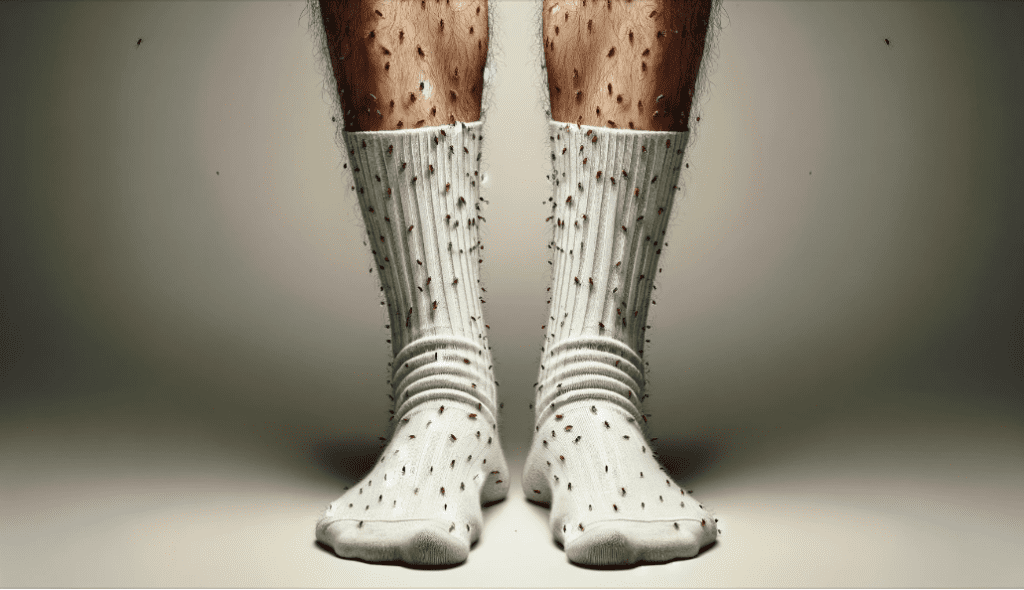
Testing for fleas in a house without pets requires creativity and attentiveness, as the usual signs, such as pet scratching, won’t apply. Here are several unique methods to detect fleas in a pet-free environment:
Implementing these unique testing methods can help reveal the presence of fleas even in homes without pets. Early detection is crucial for preventing a full-blown infestation and ensures that you can take swift action to eradicate these unwelcome pests from your living space.
How Long Can Fleas and Their Pupae Survive?
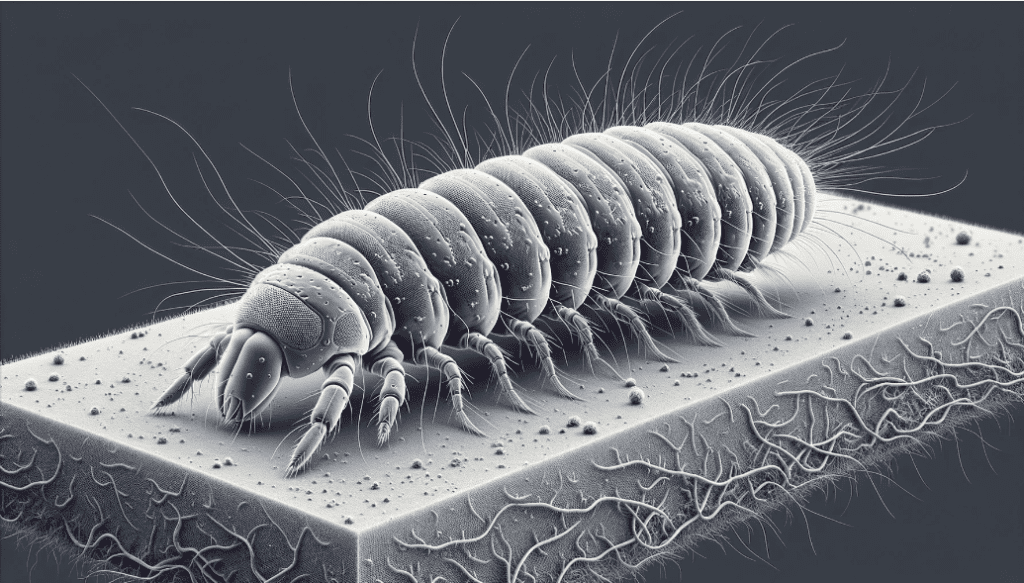
Fleas are remarkably resilient creatures, and their ability to survive in a home without pets may surprise many. Here are some unique facts about their survival capabilities:
Treating Fleas in the Home
Eradicating fleas from your home requires a multi-faceted approach, especially when seeking cost-effective solutions alongside considering professional pest control services. Here are unique and varied ways to tackle flea infestations, catering to different budgets and preferences:
Unique DIY Methods
Cost-Effective Strategies
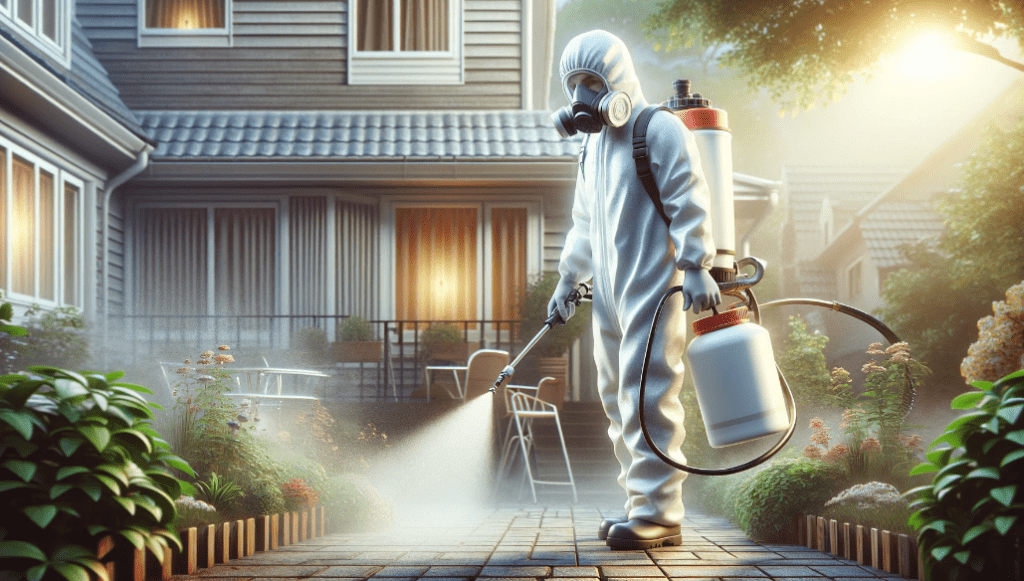
Professional Pest Control
Combining these unique, cost-effective, and professional strategies can provide a comprehensive approach to flea eradication. It’s essential to address the problem holistically, considering both the indoor and outdoor environments, to prevent future infestations.
Conclusion: Addressing Flea Infestations
In conclusion, tackling a flea infestation requires a proactive and multifaceted approach, whether in a home with pets or not.
From unique DIY methods like using diatomaceous earth and homemade flea traps to cost-effective strategies such as regular vacuuming and washing bedding in hot water, there are several ways to combat these resilient pests.
Additionally, for severe infestations or when DIY solutions fall short, professional pest control services offer a powerful alternative with access to potent treatments and integrated pest management strategies.
By understanding the lifecycle of fleas and employing a combination of these methods, homeowners can effectively reduce or eliminate flea populations, ensuring a healthier and more comfortable living environment for all occupants.

